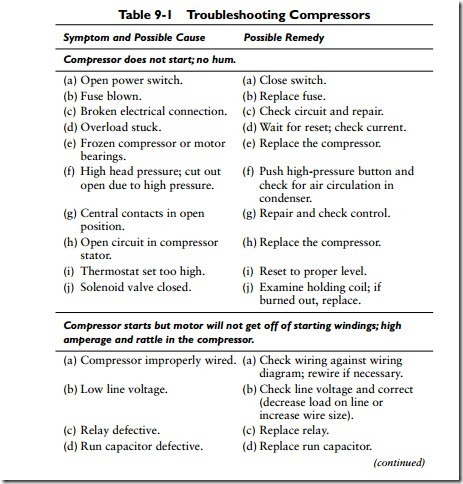Troubleshooting Compressors
When a compressor is suspected of being defective, a complete analysis should be made of the system before the compressor is replaced. In some cases, the symptoms encountered in servicing an
air conditioner may lead the serviceperson to suspect the compressor when actually the trouble is in another section of the system. For example, noise and knocking are often attributed to a faulty compressor when the trouble may be a loose compressor flywheel, incorrect belt alignment, air in the system, or a large quantity of oil being pumped through the compressor because of liquid refrigerant in the crankcase.
Table 9-1 lists the most common operating problems associated with air-conditioning compressors. For each observable symptom, a possible cause and remedy are suggested.
Each compressor should be equipped with internal devices to provide protection against the following operating problems:
1. Motor overload
2. Locked rotor
3. Extreme voltage supply
4. Excessive winding temperature
5. Excessive pressure
6. Loss of refrigerant charge
7. Compressor cycling
If these devices are operating properly, the compressor will pro- vide efficient and trouble-free service.

